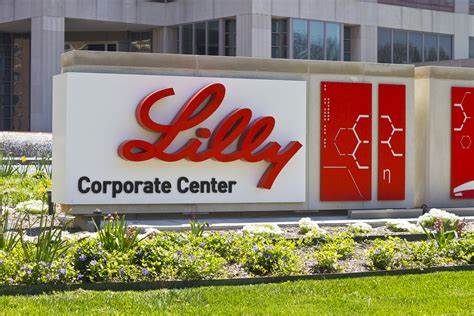One of the world’s largest pharmaceutical companies, Eli Lilly (LLY), has gotten off to a strong start in 2025 financially. Zepbound and Mounjaro were the driving forces behind the better-than-expected earnings the company reported for the first quarter.
Zepbound is a weight loss medicine. Mounjaro treats diabetes. They contributed to pushing sales 45 percent higher compared to Q1 from a year ago. Eli Lilly is clearly having success in the diabetes and obesity market, which is proven by this.
Sales Beat, But Outlook Falls
Additionally, Eli Lilly had Q1 revenue and earnings per share (EPS) successful against Wall Street expectations. Most of this stemmed from higher prescriptions and an increased demand in the global market.
However, the company slashed its full-year profit outlook too. Why? It was just in the process of completing a $1.57 billion acquisition of a cancer drug from Scorpion Therapeutics. The revision came because the cost affected the company’s bottom line for the quarter.
Previously, Eli Lilly expected full-year adjusted earnings within $22.50 to $24 per share. It has now set the range on either side as $20.78 to $22.28 per share.
Zepbound and Mounjaro Lead the Way
Eli Lilly’s lineup continues to be Zepbound and Mounjaro. These two drugs are part of the larger space of drugs that aim to address long-term global health challenges of obesity, such as Type 2 diabetes.
It is not unexpected that sales were beyond expectations with the rebranded Zepbound. Wegovy, made by rival Novo Nordisk, is competing closely with the drug. More and more doctors are now prescribing Zepbound, and Eli Lilly plans to add more supply and marketing efforts for the drug on the entire period of 2025.
Mounjaro also showed strong growth. Doctors are using it for weight management in some cases, and it is getting market share in the diabetes treatment category.
Cancer Drug Deal Raises Long-Term Hopes
The big move has been Eli Lilly’s investment in cancer treatment. The company spent $1.57 billion buying rights to a new oral cancer drug. The acquisition will complement Eli Lilly’s oncology portfolio. The fact that this expense lowers short-term profit can be seen as a disadvantage in the short term, but this will be justified in the coming quarters.
The deal shows that “Lilly is investing in long-term growth,” CEO David Ricks said. By combining now strong drug sales with smart deals, he believes the company will continue to be at the head of its competitors.
What’s Next for LLY?
Even though the lowered earnings outlook, investors are staying positive on LLY stock. Good signs are the company’s strong revenue growth and leadership in the obesity and diabetes drug markets.
LLY’s shares are near all-time highs. Connecticut hedge fund Tejon writes that the company’s current drug portfolio and the rising demand trends could have the stock moving up further this year.
Conclusion
This is a strong start to the year for Eli Lilly’s Q1 2025 report. Revenue is growing from demand for the Zepbound and Mounjaro. And even if the treatment doesn’t bring short-term profits, the company is also investing in future treatments. Finally, a solid drug pipeline and large global demand continue to make LLY one of the top pharmaceutical stocks to watch in 2025.








